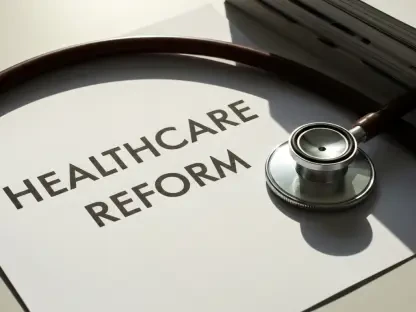The transition to digital quality measures (dQMs) represents a significant turning point in the healthcare industry, spearheaded by CMS and NCQA, pushing toward the Fast Healthcare Interoperability Resources (FHIR®) framework. This shift marks a move away from traditional quality measurement systems that often involved manual coding and chart extractions, leading to increased costs and administrative burdens. Many stakeholders in the healthcare sector are anxious about these changes, as the countdown to the 2030 deadline for full digital adoption of HEDIS® measures looms large. Despite the sector’s hesitance, the transformation is inevitable and swiftly approaches. Understanding this reality, health plans need to proactively evaluate program setups, commence phased rollouts, and build partnerships with vendors ready to facilitate this transition. This article provides strategic insights into dQMs preparation, offering tools and guidance for a seamless transition.
1. Understanding the Transition to dQMs
Conventional quality measurement systems lack efficiency due to fragmented data and delays in results impacting healthcare delivery. Transitioning to dQMs aims to overcome these shortcomings by leveraging the FHIR® data model. The NCQA highlights several benefits of this transition, such as reduced administrative costs and a streamlined alignment of measures across various programs. Most importantly, this approach enhances data relevance, leading to improved patient care. Notably, dQMs utilize data from electronic health records (EHRs), registries, case management systems, and health information exchanges (HIEs) alongside traditional claims and medical record reviews (MRRs). This integration of data sources is set to gradually replace traditional hybrid measures through a phased approach, with an expectation of all HEDIS measures to go entirely digital by 2030. The adaptation involves understanding the data models and ensuring interoperability across diverse healthcare systems to fulfill these quality measures.
Being ready for the transition involves a robust infrastructure and an understanding of the technical requirements. Health organizations must focus on ensuring compliance with interoperable data formats and address any potential data gaps that could affect measurement accuracy. The introduction of digital solutions aims to resolve these inefficiencies, facilitating better care management. FHIR® standards become pivotal in this transformation, providing a uniform framework for electronic data exchange in healthcare, which enhances consistency and precision in quality measures reporting. The shift not only affects measurement methodologies but also prompts a reevaluation of underlying systems to support this digital evolution. Thus, organizations must align their IT capabilities and quality operations to better manage and leverage this transition toward more significant health outcome improvements.
2. Implementing the dQMs Preparation Strategy
Effective preparation for transitioning to dQMs begins with an organized approach, ensuring all aspects of implementation are meticulously planned. One of the critical steps is creating an inventory of the interoperability and data format options relevant to the organization’s major providers and their existing EHRs. This inventory forms the backbone of understanding how different systems interoperate and will be crucial in devising an integration strategy that suits specific organizational needs. Prioritizing high-volume vendors for early integration can streamline this process, progressively adding partners as the strategy unfolds. Initiating pilot programs can offer valuable insights into data management intricacies and potential barriers that could arise.
Selecting the right intermediary data aggregator can facilitate seamless access to data across various providers and EHR vendors, providing a level of assurance that all necessary data is being effectively collected and integrated. Confirming the file formats and ensuring digital files align with formats like JSON FHIR instead of PDFs is crucial to avoid data processing delays. Additionally, assessing the impact of each measure and evaluating any discrepancies between administrative and hybrid rates is essential to address the “hybrid lift” gap. This understanding helps prioritize impacted measures, allowing health plans to formulate strategic approaches tailored to current performance metrics, considering off-cycle MRRs and clinical data partnerships.
3. Partnering for a Successful Transition
The journey toward full digital measure adoption necessitates not only internal adjustments but also investing in strategic partnerships with experts who can guide the transformation. Understanding the interplay between internal quality operations and external digital data conversion is crucial for a seamless transition. Organizations must ensure that quality improvement activities are well-supported by experienced partners who can offer scalable, future-ready solutions for evolving measurement needs. Engaging trusted partners accelerates the adoption of a digital-first approach, balancing the mix between traditional and new-age data sources.
A successful transition involves leveraging partners with expertise in digital measurement, such as Inovalon, which offers scalable solutions that align with future digital compliance necessities. Their suite of tools, such as the Converged Solutions Suite, provides support in ingesting FHIR data while maintaining current data feeds. FHIR-based data integration is complemented by ongoing support for scoring and reporting of traditional quality measures. This versatile capability anticipates the scalable integration necessary for upcoming fully digital metrics, offering a robust infrastructure to manage data from diverse sources seamlessly. These partnerships enhance the ability to manage large datasets, ensuring adaptability as the industry heads into a fully digital era.
4. Bridging the Hybrid Measures Gap
Navigating the transition from hybrid measures to complete electronic clinical data systems (ECDS) necessitates addressing the gap in data coverage that might impact performance scores. When administrative rates differ significantly from sample or hybrid rates, proactive quality improvements are imperative. Identifying these disparities allows for implementing targeted interventions aimed at closing these gaps, ensuring consistent performance across various measures. Effective outreach through digital platforms forms a strategic part of this process, enhancing member engagement and care management activities to align with new standards.
Closing the hybrid measure gap involves strategic implementations like leveraging prospective MRRs with abstraction forms to fill existing data voids. Upcoming technological advancements, such as web-based MRR applications powered with AI and natural language processing, promise to streamline the management of large medical records, expanding data processing capabilities. Tools that support targeted campaigns enable better provider and member engagement, effectively bridging the gap caused by changes in measurement methodologies. Recognition and appreciation of these technological tools foster adaptive capacity within organizations, ensuring they are well-equipped to meet the demands of digital quality measures and optimize care delivery.
Moving Forward with dQMs
Traditional quality measurement systems in healthcare often fall short due to isolated data and delays in result dissemination, which adversely affect care delivery. The transition to digital Quality Measures (dQMs) is poised to address these limitations by adopting the FHIR® data model. According to the NCQA, this shift promises reduced administrative costs and better alignment of metrics across healthcare programs. Most critically, it enhances data relevance, ultimately elevating patient care standards. dQMs integrate data from EHRs, registries, case management systems, and HIEs along with traditional sources like claims and MRRs. This convergence of data is set to phase out traditional hybrid measures gradually, with the goal of making all HEDIS measures fully digital by 2030. Success in this transition mandates a sturdy infrastructure and an understanding of technical needs. To support these digital quality measures, healthcare organizations must ensure interoperable data formats and plug any data gaps. Aligning IT and quality operations is crucial for improved health outcomes.









